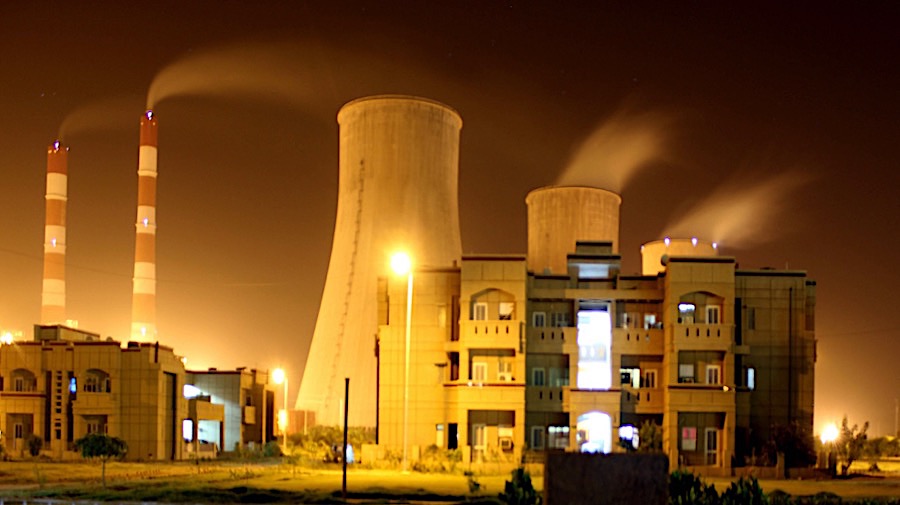
Coal India, the world’s largest producer of the fossil fuel, is closing 37 mines before March next year as it said they are no longer economically viable due to increasing competition from renewable energy sources.
The state-run company, responsible for about 82% of India’s total coal output, said the closures would save around 8 billion rupees ($124 million), The Telegraph India reported.
India has also announced it will not build any more coal plants after 2022.
The country has also announced it will not build any more coal plants after 2022 and predicts renewables to account for more than half its power by 2027.
Only last month, New Delhi cancelled plans to build nearly 14 gigawatts of coal-fired power stations, which according to Tim Buckley, analyst at the Institute for Energy Economics and Financial Analysis, will have “profound” ramifications for global energy markets.
“India’s solar tariffs have literally been free falling in recent months,” he wrote.
At the same time that solar becomes cheaper, the cost of coal power is rising in India as local mines face mounting costs and tougher environmental regulations, a report by Bloomberg New Energy Finance said earlier this month. Falling demand is also an issue.
India’s solar-generation capacity is expected to touch 8.8 gigawatts (GW) this year to become the third-largest solar market in the world, according to renewable energy consultancy Bridge To India (BTI). At the end of 2016 India had just 7.5 gigawatts.
The nation has set itself some of the world’s most ambitious targets for installing new solar power capacity, with prime minister Narendra Modi aiming for 100 gigawatts of solar power by 2022.
The pace of new solar installations has picked up in recent months as equipment prices have plummeted.
As a result, consulting firm Ernst & Young recently said India has become the world’s second best market for investing in renewable energy, after China.
12 Comments
Richard Szulewski
Question….how much money is being spent on government subsidies to lower the cost of those renewables?
Hukam Chand Dahiya
One time subsidy for a renewable source is always welcome than perpetual one in the form of Imports from Developed world, who are ruling the market without any additional investment since centuries.
FIFO68
Why is mining.com running a story with quotes from an anti coal activist?
* IEEFA is an anti-coal propaganda machine and their bogus reports and news releases aren’t worth the paper they are written on.
* Tim Buckley is a paid shill of his overseas anti-coal brigade masters.
* “Mr Buckley pretends to be a financial analyst but in reality he is an anti-coal activist who has regularly argued against the jobs of Hunter coal miners,” said Minerals Council chief executive Stephen Galilee, in response to Newcastle Herald questions.
http://www.theherald.com.au/story/4381497/the-man-the-mining-industry-loves-to-hate-photos-video/
Do a search for Tim Buckley IEEFA on YouTube. You will see him at an activist rally saying “we believe we will win against this mine etc”, you will see him give a talk where he presents a graph of the thermal coal price falling from the height of the boom in 2010 to the trough of 2015 and claim its a structural decline.
The bloke works from his home office in Sydney pumping out media releases and bogus reports full of cherry picked data.
Richard Bulman
This really requires serious fact checking. Sounds remarkably like the South Australian disastrous experiment. For the poor people of India, I hope this is not correct.
Ron Dowers
And when these solar cells meet their “end of life” before they have generated enough energy to pay for themselves then what? The fact is the cost of electricity will need to go up in order for these solar systems to be viable.
cordilleran
Solar and wind renewables are only “cheap” if you don’t add in the cost of either storage or backup power. Up to now they’ve had a free ride with take or pay contracts where fossil fuel power sources are forced to cover for their output fluctuations in “shadowing” mode. Shadowing makes fossil fuel power less efficient and drives up it’s unit costs.
There’s scant honest accounting of renewable energy costs and capacity factors in the media, which is why the low information public tend to believe fairy tales like India will be 50% renewable powered by 2027.
Tom Turner
cord. agree with your comments, but need to add the high installation costs usually paid by gov subsidy.
Vats
Interesting thing Adani is spending billions to get Coal from Australia to generate Coal energy and Indian Government is closing their own production!!!!!!
https://www.theguardian.com/environment/2017/jun/13/india-enough-coal-without-adani-mine-must-keep-importing-piyush-goyal
Raul Ramirez
Maybe because it’s easier and cheaper to start a new one, with newer technology, trained staff and safety in place than to rework on much older ones. As long as and if they don’t follow BMA which was getting people from the streets to train as Maintenance Planners, and by doing so not complying with the Coal Mine Legislation. Someone in the Queensland Government is or was closing the eyes for this to happens.
R O
Does this mean nuclear plants might be given more importance?
Boomandbust
According to the Indian government, (http://mnre.gov.in/mission-and-vision-2/achievements), there was actually 12.504 GW of installed solar capacity as of the end of the 2017 Indian Fiscal year – 31 March 2017. THat compares to 192 GW of coal fired capacity. However capacity is not the same thing as generation. Because the sun doesn’t shine all the time, solar plants typically work at 30-35% availability – compared to 80-85% for coal. That makes every GW of coal capacity worth two and half times a GW of solar. It also leaves a big problem if you want power in the middle of the night, or during the monsoon season.
Solar power makes a lot of sense for India because of its distributed nature, but it will be a long time before it supplants the need for high quality coal.
James Hanson
http://www.msn.com/en-us/news/us/coal-king-sues-john-oliver/ar-BBD3d89?li=BBnbfcL